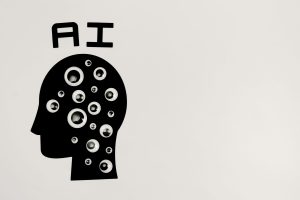Understanding the Power of Non-Verbal Communication in Interviews
In today’s competitive job market, standing out in an interview is crucial. However, it’s not just about the words we speak, but also the messages we convey through our body language and non-verbal cues. Despite what many people believe, non-verbal communication plays a powerful role in job interviews. In fact, research has shown that non-verbal cues can have a greater impact on an interviewer’s perception of a candidate than the words they say. Understanding how non-verbal communication works and learning how to use it effectively can give job seekers a competitive edge in the interview process.
The Role of Non-Verbal Communication in Interviews
Before we dive into the power of non-verbal communication in interviews, let’s first define what it is. Non-verbal communication is the transmission of information through body language, facial expressions, gestures, and tone of voice. It can convey a range of emotions and attitudes, from confidence and sincerity to nervousness and discomfort.
In an interview, non-verbal communication can influence the interviewer’s impression of a candidate and can even make or break the outcome of the interview. For instance, a confident and enthusiastic candidate who maintains eye contact, smiles, and uses open and relaxed body language is likely to make a positive impression compared to a candidate who appears tense, avoids eye contact, and has closed off body language.
Body Language and Posture
Body language is an essential aspect of non-verbal communication, and it can reveal a lot about a person’s confidence and attitude. During an interview, it’s crucial to maintain an open and relaxed posture. Avoid crossing your arms or legs, which can make you appear defensive or closed off. Instead, sit up straight with your shoulders relaxed, and use your hands to gesture naturally when appropriate.
Additionally, maintaining good eye contact is crucial in creating a sense of trust and connection with the interviewer. It’s essential to strike a balance between making appropriate eye contact and not making the interviewer feel uncomfortable or intimidated.
Facial Expressions
Our facial expressions can also convey a wealth of information and can greatly influence how others perceive us. Smiling is a particularly powerful form of non-verbal communication, as it can make us appear more friendly and approachable. However, it’s important to be sincere in your smile and avoid fake or forced smiles, as they can be easily detected by an interviewer.
Another essential aspect of facial expressions is keeping a neutral or positive expression throughout the interview, even when discussing more challenging topics. Frowning or looking visibly uncomfortable can send negative signals to the interviewer and may affect their perception of you as a candidate.
Tone of Voice
Non-verbal communication also includes the tone of voice, which can greatly influence the message we convey. In an interview, it’s crucial to maintain a confident yet friendly tone, avoiding speaking too softly or too loudly. It’s also essential to avoid speaking too quickly, as it can make you appear nervous or unsure of yourself. Instead, speak at a steady pace and pause when necessary to gather your thoughts.
Using Non-Verbal Communication to Your Advantage
Now that we understand the role of non-verbal communication in interviews let’s explore how to use it to our advantage. The first step is to be aware of your non-verbal cues and how they may be perceived by others. Practice your body language and facial expressions in front of a mirror or with a friend to see how you appear to others.
Another useful tip is to match your non-verbal cues to your words. For instance, if you’re discussing your passion for a particular job or skill, use enthusiastic body language and facial expressions that match your words. This will add credibility to your message and make you appear more sincere.
Lastly, don’t forget to convey confidence and professionalism through your non-verbal communication. Remember to maintain a neutral or positive expression, make appropriate eye contact, and speak with a confident yet friendly tone. This will help create a positive first impression and give you an edge over other candidates.
In Conclusion
Non-verbal communication is a powerful tool in interviews and can greatly influence how others perceive us. By being aware of our body language, facial expressions, and tone of voice, and using them effectively, we can make a positive and lasting impression on interviewers. So, in addition to practicing your answers and researching the company, make sure to pay attention to your non-verbal cues to ace your next job interview.











